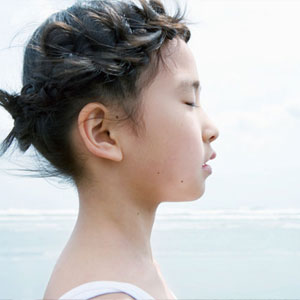The Reality of Retainers
You've probably seen a kid in the cafeteria take out his retainer before eating lunch. Carefully, he places it in a plastic container to make sure that it's safe while he eats. You can tell that this small plastic and metal mouthpiece is important to him. You might wonder why. Let's find out.
What's a Retainer?
A retainer is a piece of plastic and metal that is custom-made for each individual kid who needs one. It fits the top of the teeth and mouth. No two retainers are alike, even though many look similar.
Retainers are really common. In fact, most people (kids and adults) who have braces have to wear a retainer for at least a little while after getting their braces taken off. Other people wear them to close gaps in their teeth, to help with speech problems, or to solve certain medical problems.
Why Do I Need to Wear a Retainer?
You might need a retainer for a few reasons. The most common reason is to help your teeth stay set in their new positions after wearing braces. It's important to wear your retainer because as your body grows, your teeth do some shifting. The retainer helps to control this shifting, which occurs naturally.
After your braces are removed, your orthodontist (a special dentist who helps straighten teeth and correct jaw problems) will fit you for a retainer and tell you how long to wear it and when. For example, you might have to wear it all day for 3 months but then only at night after that. Some kids may wear their retainer only at night right from the start, but they may have to wear it for more than a year. The retainer keeps the teeth in line and you won't even notice it while you're sleeping!
Other kids may wear retainers to close a space between their teeth or just to move one tooth. In these cases, braces aren't needed because retainers can do the job. Often, retainers will be worn for several years to close a space, for example, and then keep the gap closed by holding the teeth in place.
When you wear a retainer for any reason, certain teeth may feel pressure and might even feel sore for the first few days. If you experience this, don't worry — it's completely normal.
Retainers can help many mouth problems besides shifting teeth. Sometimes they're used to help a medical problem. For example, you may have a tongue thrust (a condition where your tongue sneaks through your teeth when you talk). Some retainers, known as a crib or tongue cage retainers, are designed with small metal bars that hang down from the roof of your mouth. These retainers keep your tongue from going forward in between your teeth when you speak. Your tongue is trained to go to the roof of your mouth instead of through your teeth. The length of time kids wear a tongue cage varies depending on the kid.
Another use for retainers is to help people with temporomandibular disorder (TMD). This disorder is usually a result of a bite problem (the teeth don't meet together properly when the jaws are closed) called malocclusion (say: mal-uh-KLOO-zhun) or bruxism (say: BRUK-sih-zum), which is grinding your teeth while you sleep. Grinding stretches the muscles and joints in your mouth and jaws and sometimes can cause jaw pain or headaches. Retainers can help you by preventing your mouth from closing completely at night, which keeps you from grinding your teeth.
page 1
Getting Fitted for and Wearing a Retainer
This is the easy part. Your orthodontist will fit you for the retainer using a material known as alginate (say: AL-juh-nate). It's a chewy, chalky kind of thick liquid that makes a mold of your teeth when you sink them into it. The fitting process is fast, painless, and doesn't even taste bad — and you can choose from different flavors.
Your finished retainer can be designed to express your style and likes. Sometimes you can have a picture such as Batman, Christmas trees, or Halloween bats on the plastic part of the retainer. Once you've been fitted for the retainer, you usually have to wait less than a week to get the real thing.
You may think your retainer feels weird at first. That's normal. But see your orthodontist for an adjustment if the retainer causes pain or cuts or rubs against your gums.
At first, you'll need to get used to talking with it in your mouth. Talking slowly at first is a good way to practice and eventually, you won't even notice it's there. Dentists advise reading aloud for several minutes each day. You may also notice an increased saliva flow (more spit in your mouth) in the first few days of wearing your new retainer, which is normal.
Caring for Your Retainer
Retainers live in your mouth along with bacteria, plaque, and leftover food particles. You should clean your retainer every day, but make sure to check with your orthodontist about how your type of retainer should be cleaned (some kinds shouldn't be cleaned with toothpaste). You can also soak it in mouthwash or a denture-cleaning agent to freshen it up and kill germs.
Because the plastic of your retainer can crack if it gets too dry, you should always soak it when it isn't in your mouth. Plastic can warp easily, so don't put it in hot water or leave it near a heat source — like on your radiator, for example. Finally, do not bend the wires. Flipping the retainer around in your mouth will cause the wires to bend.
One important way to take care of your retainer is not to lose it. They are expensive and your mom or dad might have to pay for lost or damaged retainers. Worse yet, they might ask you to help pay for a new one! So look before you dump your lunch tray and try to keep it in the same spot at home when you're not wearing it. In other words, retain your retainer!


